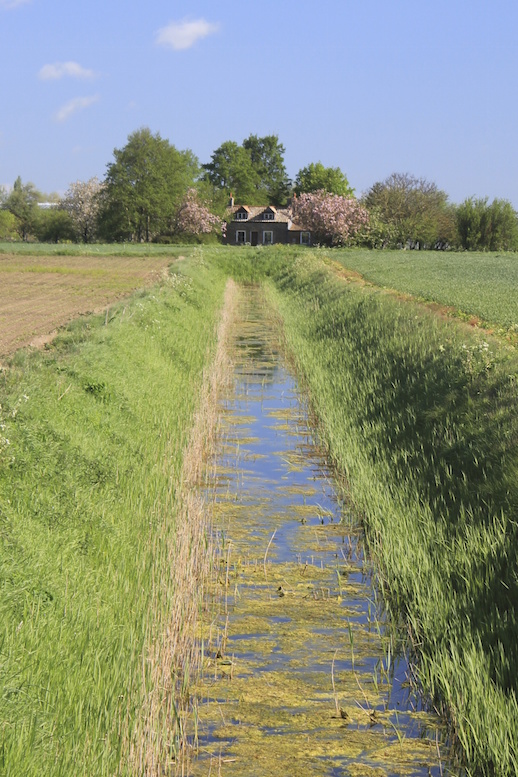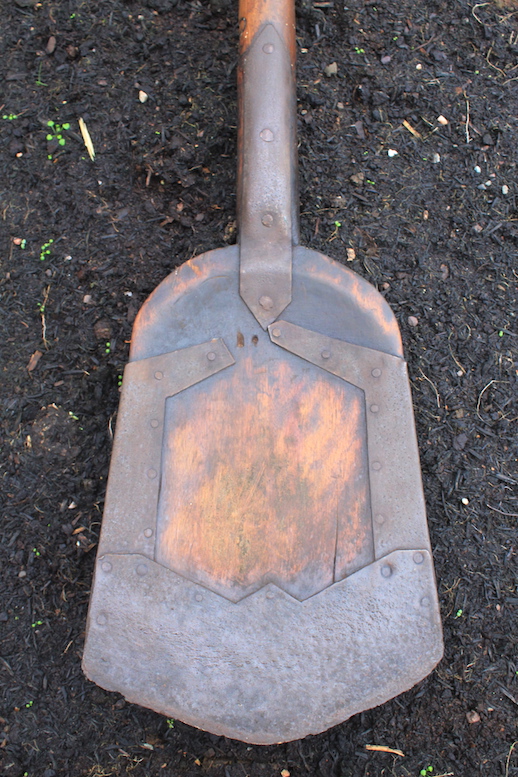 Ditches, dykes and drains
Ditches, dykes and drains
Words and pictures: John Richardson
Autumn has well and truly arrived in the West Norfolk Fenland and today a grey blanket, not of fog, but of steady and relentless rain, has drastically reduced the visibility that is made complete by the sound of the rain drumming on the windows and greenhouse. There must be millions of gallons falling onto the land.
Watching and listening to the rain makes you wonder where it all goes and that thought took me back to a question I asked a local farmer when we first moved into the area five years ago. ‘What’s the difference between a ditch, a dyke and a drain?’ The answer was simple really; he said ‘just think that ditches drain into dykes, dykes drain into drains and the drains drain into main drains.’ There, crystal clear, just like the water. However he inevitably added the caveat that this was his rule of thumb and others might think differently; so far just typical of West Norfolk then.
When you walk around and look closely at the land you can see that the ditches are cut that little bit higher with a fall to the dykes and of course the same applies to the relationship of the dykes to the drains. Once the water is in the drains then the pumps take over the work that gravity has been doing. As always and this being Fenland, there are exceptions because in some places the drains are higher than the dykes and in these places an electric pump lifts the water into the drain.
It is fascinating to think that the giant patchwork of fields that are bordered by ditches and dykes were all, originally, dug by hand and hard unrelenting physical endeavour. No powerful diesel engines driving diggers and back hoes in those days, the same goes for the terracotta land drains, the ‘underground ditches’, that are buried six feet down beneath the fields with a chain width between each and every one and a gradual fall which helps the water run away into the dykes on its journey to the sea. There are plank dams that are used to retain the water for irrigation in the dry weather but when rain arrives the levels and flows are carefully monitored and carefully maintained.
Despite this system of management in the bigger dykes there are lots of small fish, roach, rudd, perch, eels and sticklebacks that call them home, along with the frogs, toads, newts and snakes. Above water they are the home for water voles and birds and heaven knows what the insect population is. Barn owls hunt their headlands, as do herons, kestrel and the sparrow hawk. In winter they are home to plenty of woodcock and snipe and they are an all year round home for partridge and pheasant too.
When the drainage system was first dug out that was not the end of the work, more like the beginning. The land is so fertile that every year the system becomes choked with reed, lilies and weed, and when autumn came round was when the ‘Slubbers’ work began. These were gangs of men, mainly Irish and travelling with their families, who worked with copper edged wooden shovels made from willow for lightness. The Slubbers had to physically get into the water and clear the choking weed and reed by hand. They must have been hard, strong men working in those conditions through the autumn and winter throwing the weed and silt six feet or more up the sides of the ditches and dykes on to the headland.
On one of the farms where I fish the farmer who lives there told a story that his father had, in turn, told him about a gang of Slubbers who got lost in a thick rolling fog. This was in the days when there were no electric poles or pylons to guide you back through the freezing winter fog covering the Fenland wilderness. The farmer and his friends finally found them huddled together for warmth, long after dark, no doubt they would have died of exposure without the local knowledge that was applied to find them. One of the men, a renowned drinker and brawler, was all for going to the pub to celebrate their salvation – well he was until he saw his wife waiting for him and the day’s wages. A man who could start a fight with himself in an empty barn meekly handed his wages over to his wife; she must have been a fearsome lady. The punch line of that story made me smile.
Now, at the tidal end of the Middle Level drainage system there are a set of six pumps at the St Germans pumping station that are monitored by computers, each pump, once run up to maximum, can move the equivalent of the contents of an Olympic swimming pool in around thirty seconds.
It is not just the rain in Fenland that can cause problems with water; the Rivers Ouse and Nene drain great tracts of the southern Midlands, so all of this influx of water has to be monitored too as it is adds to the volume of water that is already present in the system. Timing is crucial so that the water pressure on the banks is constant, to maintain their integrity – too much could cause a burst in the bank and too little an inward collapse into the drain. When you are out fishing on the fen and the pumps start their work, a placid drain can begin to move at a speed like that of a Scottish salmon river. The turbulence spoils the fishing, but when the pumps stop, all that turbulence and colour does seem to improve the fishing.
All this talk about water and fishing has inspired me to fish; despite the heavy rain I think I have an appointment with the pike and perch in one of the drains later today.
